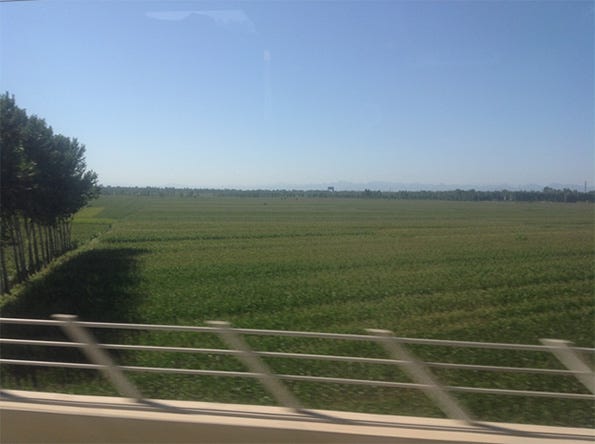September 22, 2014

I just returned from a trip to China and needless to say, it was a very interesting trip. During my time there, I attended many meetings and did my best to try and figure out what was real versus what was fiction. I spent quite a bit of time shaking my head and wondering what this country will look like in 20 years. I captured the picture below when traveling the approximate 600 miles between Beijing and Xian. The picture stands out to me because there is corn everywhere. Another thing I noticed was that there were no weeds in this corn, which seems odd to me. Before this trip, I did not expect to see a landscape that was so similar to that of the Midwest. 
There are a few themes related to pork production that I took away from this trip. First, the Chinese currently produce 50% of the overall pork in the world. In all of the meetings that I attended in China, food security remains their No. 1 priority. In addition, the Chinese plan to move over 300 million people from rural China to urban China for manufacturing jobs during the next 20 to 30 years. Most of these 300 million people historically produced their own food. That is something they will no longer be able to do when they move into urban areas. The move to a more modern, integrated model is under way in China. The government is very supportive of this policy and will work very hard to make sure the integration of the food industry continues. This integration is their best chance to be as close to self-sustainable as possible. If they are 95% self-sustainable on pork, they would need to import the remaining 5%. The 5% they need is about 25 to30% of the entire pork production in the United States. Capturing just 30% of this market would provide huge potential for the U.S. pork industry. It will be very interesting to see how this plays out during the next 10 to 20 years.
Secondly, price will be important in the future. Today, I believe the U.S. pork producers are the best in the world and the lowest cost producers. From a live production side and a processing side we are the envy of the world when it comes to our overall model of pork production. With lower feed costs, we will be even more competitive in the overall world marketplace. My concern is that the lower feed costs may cause some producers to become complacent with driving costs out of our systems. I challenge all of you to consider this: if corn stays at $3.25 a bushel, where will your breakeven need to be to remain competitive long-term? I think that your breakeven should be below $70 carcass hundredweight or lower to be competitive with your peers in the United States. With margins looking good right now, I worry that producers will lose sight of their cost of production, which will still be essential. Food safety and product quality is important, but price will matter most. If the United States is not competitive in terms of pricing, the Chinese will go elsewhere to get their product. If we want to be the place to get product from in the future, we need to continue to focus on being the world’s best in the pork industry.
The last point I would like to make is that we are fortunate to live in the greatest country in the world. In general, we take food for granted. We have been blessed by the American farmer who is the envy of the world when it comes to food production. Our challenge is to maintain this status in the future.
You May Also Like



